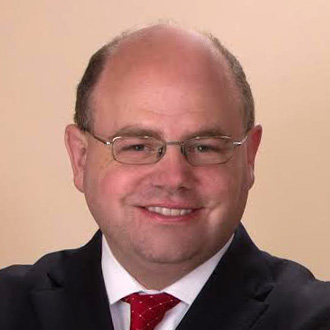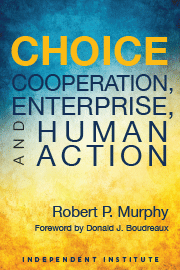Hardly anyone disputes the contention that the modem public school is seriously flawed. Test scores continue to be poor while metal detectors are found in the more violent schools. Welfare-state liberals argue that schools in poor areas need more money to place them on an equal footing with their richer counterparts. Conservatives usually reply that the solution is a voucher system that would break the government monopoly on education by restoring choice and control to parents. But virtually all participants on both sides of the debate concede the nobility of the original reformers; in their view, the “good intentions” of such school champions as Horace Mann and John Dewey led to “unintended consequences.”
Such admiration is misplaced. As historian Michael Katz writes, “The crusade for educational reform led by Horace Mann . . . was not the simple, unambiguous good it had long been taken to be; the central aim of the movement was to establish more efficient mechanisms of social control, and its chief legacy was the principle that ‘education was something the better part of the community did to the others to make them orderly, moral, and tractable.’ ”1
Private Education Displaced
Before the 1830s, education was largely an “informal, local affair,” in which Catholic, Protestant, and other schools competed for pupils.2 Often local governments would provide modest aid to schools, albeit in an unsystematic manner. But there certainly was no conception of a “public” school, neither in the United States nor anywhere else in the Western world. The distinction between private and public schools was not crystallized until the “school wars” of the 1840s, which officially ended the use of public funds to support Catholic schools.3
What were the causes of that shift from private to public education? It is impossible to review the period in question and fail to conclude that the drive for public education was largely a response to the huge influx of poor, non-Protestant immigrants. Between 1821 and 1850 just under 2.5 million Europeans emigrated to the United States, over one million of whom were Irish Catholics. Nativist and “Know-Nothing” backlashes occurred, which included the burning of Catholic buildings and other forms of bigotry.4 Many viewed Catholics as owing their loyalty to the Pope. One editor wrote that “a Romanist minority, trained by nuns and priests . . . furnishes the majority of our criminals.”5
The increase in Catholics naturally led to construction of more Catholic schools. Many Protestants felt that they had to take action to check the rising prevalence of a false creed. Doubtless many would have supported government establishment of the Protestant church. Mann himself lamented that “there had never yet been a Christian government on earth.”6 The general respect for religious tolerance, however, made such a bold move politically impossible. Instead, control of religion was cleverly instituted through the public school. “The public school, an important socializing institution, became the substitute for the American national church,” Susan Rose writes.7
The “nondenominational” religious education eloquently described by Horace Mann was a farce—the schools employed Protestant hymns, prayers, and the King James Bible. It was in response to such non-neutrality that the Catholic parochial system was established in 1874.8
As with all who rely on government, Protestants would eventually rue the unholy alliance of state and school that their predecessors had established. As America became increasingly secularized, so went the public school. Like the Catholics before them, Protestants felt compelled to establish their own private schools to protect their children from the humanist and agnostic education they would now receive at the hands of the state.9 Their forefathers had failed to see the danger common to all “democratic” coercion: one day the comfortable majority may find itself in the oppressed minority.
Schools as Protectionism
While the particular reasons for school consolidation were thus religious at heart, the extension of government influence in the education industry can also be analyzed as an attempt by inefficient “firms” to hinder competitors, a feature common to all expansions of state power. (Indeed, in Oregon, private schooling was literally forbidden until the Supreme Court in 1927 declared the prohibition unconstitutional.10) The primary supporters of Mann’s drive to standardize curricula and centralize the disbursement of public funds were precisely those who would benefit financially from such policies. They included the trade unions, whose members benefited from the removal of children from the labor market, and the upper middle class, whose children were more likely to attend the “free” public schools than were children from poorer families (who often had to work). Thus poor families and childless citizens subsidized those with enrolled children.11
The Protestant schools were losing “market share,” and turned to government to pad their budgets and restrict the actions of their chief competitors, the Catholic schools. In other arenas, people can quickly see through such self-interested “altruism.” When a corporation clamors for an import restriction on foreign competition, most observers agree that it is acting to increase its own profits, not to protect the public from “dumping.” Why then do most people accept at face value the humanitarian justifications offered by the advocates of state education when such a bureaucracy confers immense wealth and power in the hands of an elite?
Once education is viewed as an industry, the consequences of restricted competition are all too predictable. Sever the link between payment and service, and the quality of the product—education—declines. Because the schools are “free,” parents are not as interested in assuring their child’s attendance. Public schools are guaranteed the revenues associated with each pupil in their geographical districts; there is no need for them to strive for excellence. If parents are dissatisfied, what can they do? The rise in taxation and lack of “free” private schools renders any alternative to the state system unattractive.
Although such an analysis of the financial “winners” of the change to a bureaucratic education system is invaluable for the explanation of specific policies, such materialist interpretations are not helpful in determining the reasons for the broad popular support of the “common-school” movement. Clearly, a large number of Americans were convinced that a centralized, standardized school system would be beneficial, and not merely in narrow, pecuniary terms. Earlier it was shown that Protestants viewed the public school as a vehicle for inculcating the true faith in the next generation. This view can be expanded. Not only were the public schools to create Protestants; they were also to instill docile obedience to the state and industry.
Was It a Conspiracy?
To those who dismiss such claims as a “conspiracy theory,” I ask: how can the public school not inculcate obedience to the state? A conscious choice must be made regarding the content of education. Neutrality is not an option. Given this, why would a ruling elite not transmit those same values that it itself possesses? Do the conspiracy-theory doubters truly believe that a teacher extolling the values of violent revolution would long remain on the state’s payroll? Or a teacher who questioned the legitimacy of the democratic system? Or a teacher who cast aspersions on the public-school system itself? Do the doubters deny that children educated in Texas are exposed to teachers and textbooks that blame the War Between the States on the North, while children in New York are taught that Lincoln was a great president? Weren’t every single one of these doubters forced to chant, every single school clay of their childhoods, the words “I pledge allegiance, to the flag, of the United States of America . . . .”
The common-school movement paralleled the industrialization of American cities. As such, the public schools were seized on as a tool for the transformation of children into complacent workers. Katz writes that “The values to be instilled by the schools were precisely those required for the conduct of a complex urban society. ... The connection was unmistakable; schools were training grounds for commerce. . . . The common school made company men.”12
Thus the public schools did not simply transmit, say, the values of honesty and peace among men; they specifically inculcated those traits necessary for city life and passed over in silence those values held by rural and ethnic Americans. This is not to suggest that such a decision was detrimental to the students, but merely to again emphasize that it is impossible to establish a school that is neutral—the views of one faction will be taught to the exclusion of those views held by the politically weak. Whoever controls the schools will control the next generation. If such a power is nearly monopolized by the government, then the politically powerful will be the ones making such decisions. In this case, that group happened to be the leaders of industry. But it certainly was not—and never will be—the majority of voters who wield such power.
Thus far readers may not be horrified by the behavior and comments of the early reformers. The Protestants sincerely believed they were saving their children from the devil. And who can complain that the schools aided the Industrial Revolution? But when one delves into those justifications of public education that fall outside the merely religious or industrial, its tyrannical and elitist nature is seen clearly. Fundamentally, the purpose of state education was to take children from parents judged incompetent and prevent those children from becoming dangerous, antisocial elements. The politically powerful arrogated to themselves the right to determine which parents were unfit to rear their own children.
Thus Henry Brown, second only to Horace Mann in championing state education, commented, “No one at all familiar with the deficient household arrangements and deranged machinery of domestic life, of the extreme poor, and ignorant, to say nothing of the intemperate—of the examples of rude manners, impure and profane language, and all the vicious habits of low bred idleness—can doubt, that it is better for children to be removed as early and as long as possible from such scenes and examples.”13
Such an attitude inevitably led to the consideration of children as wards, nay, as property, of the state. Mann wrote, “Our common schools . . . reach, with more or less directness and intensity, all the children belonging to the State,—children who are soon to be the State.”14
This diminution of individualism made possible ever greater encroachment of government in all spheres of life. And, as is the case with all accretions of state power, each increment in government authority itself justified the next increase. This served to further affirm the need for government-controlled education. After all, when the voting citizenry has the ability—via the newly acquired power of the federal government—to wreak great havoc, it becomes tremendously important to regulate their ideas. Thus Mann’s famous dictum is cast into a new and ominous light: “In a republic, ignorance is a crime.” With the establishment of compulsory attendance laws in the 1850s, Mann’s statement was no longer metaphorical.
Most people—who were themselves educated either in the public schools or who used state-approved textbooks and state-licensed teachers—were taught that the founders of the American public-school system were simply devoted to ensuring opportunity to all Americans, rich or poor. But we have seen that the main thrust of the system was to assimilate those elements of the population, such as the Catholics, poor, and foreigners, who did not fit the mold of what a “proper” American should be. School was transformed from a voluntary setting of learning into a coerced detention center, with its wards being fed consciously selected information in an attempt to produce acquiescence in the status quo. America’s current education crisis will only be solved when, ironically enough, the words of Horace Mann are followed: “[T]he education of the whole people, in a republican governnent, can never be attained without the consent of the whole people. Compulsion, even though it were a desirable, is not an available instrument. Enlightenment, not coercion, is our resource.”15
Reprinted with permission from The Freeman. © Copyright 1998, Foundation for Economic Education.
- Michael B. Katz, Class, Bureaucracy, and Schools (New York: Praeger Publishers, 1971), pp. ix–x.
- Anthony S. Bryk, Catholic Schools and the Common Good (Cambridge, Mass.: Harvard University Press, 1993), p. 18.
- Ibid., p.23.
- Mary A. Grant and Thomas C. Hunt, Catholic School Education in the United States (New York: Garland Publishing, Inc., 1992), p. 43.
- Btyk, p. 28. Although the text is unclear, it is likely that this quote was actually penned in the late 1800s, following another wave of Irish insosigration. It has been included, however, for it accurately reflects earlier Nasivist opinions.
- Louis Filler, Horace Mann on the Crisis in Education (Yellow Springs, Ohio: Antioch Press, 1965), p. 242.
- Susan D. Rose, Keeping Them Out of the Hands of Satan (New York: Rousledge, Champion, and Hall, Inc., 1988), p. 29.
- Ibid., p. 29.
- Ibid., p. 39.
- See Btyk, p. 28.
- See David B. Tyack, The One Best System (Cambridge, Mass.: Harvard University Press, 1974), p. 71, and Katz, p.43.
- Katz, pp. 32–33. Also see Tyack, p. 73.
- Katz, p. 31.
- See Filler, p. 86.
- Ibid., p. 41.










